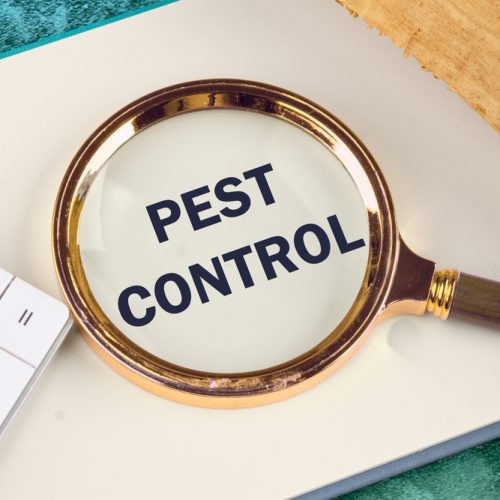Pests are more than just unwelcome guests; they can cause extensive damage to your property, contaminate your food, and even pose health risks. At Steve’s Pest Control, we’ve seen firsthand how straightforward preventive measures can save homeowners from costly treatments and extensive repairs. With this guide, we aim to empower you to keep pests at bay and protect your home proactively.
Understanding the Pest Prevention Mindset
Most homeowners think of pest control only after spotting a trail of ants in their kitchen or hearing the scratching of rodents in the walls. By this point, the infestation has often already established itself. Preventive pest care shifts your focus from solving problems to avoiding them altogether. It’s about identifying potential attractants and entry points before pests even set foot in your home.
By adopting a proactive approach, you don’t just save money and time; you also reduce the stress and risks associated with late-stage infestations.
Sealing the Fortress
Your home’s exterior is its first line of defense. Even a tiny crack or gap can become an open invitation to pests like mice, cockroaches, and ants.
Here’s what you can do to keep your home pest-proof from the outside in:
- Inspect regularly: Check your home’s foundation, walls, and roof for cracks, gaps, or damaged areas.
- Seal entry points: Use caulking to seal gaps around windows, doors, and utility lines.
- Reinforce doors and windows: Install door sweeps under exterior doors and repair damaged screens on windows and vents.
- Close off small gaps: Remember, mice can squeeze through holes as small as a dime, while cockroaches need only a sliver of space.
Maintaining your home’s exterior creates a strong barrier that can deter most pests from finding a way inside.
Landscape Management: The Buffer Zone
Your yard’s condition plays a big role in determining whether pests are drawn to your home. By managing your landscaping wisely, you can create a buffer zone that works to keep pests at bay.
Follow these landscaping tips to reduce pest attraction:
- Keep firewood at least 20 feet away from your home and elevate it off the ground.
- Trim branches that touch or hang over your roof, as they act as bridges for rodents and insects.
- Maintain an 18-inch gap between shrubs and your home’s walls to reduce humidity and hiding spots.
- Clear up yard debris like leaves and undergrowth where pests may find shelter.
- Ensure proper drainage and remove standing water, which can attract mosquitoes and other insects.
With a well-maintained yard, you not only enhance the appearance of your home but also create a pest-resistant environment.
Kitchen Vigilance: Eliminating Food Sources
To pests, your kitchen is paradise. It provides everything they need to thrive, from food to water and hiding spots. A clean kitchen is a critical step in preventive pest care.
Here’s how to stay one step ahead of the critters scavenging for food in your home:
- Store food properly: Use airtight containers to store pantry items and clean up spills and crumbs immediately.
- Clean regularly: Routinely clean beneath appliances, inside cabinets, and other difficult-to-reach areas where food particles often collect.
- Manage trash effectively: Take out the garbage frequently and ensure trash bins have tight-fitting lids.
- Monitor pet food: Store pet food in sealed containers and avoid leaving it out overnight.
A tidy, pest-free kitchen not only limits pests but also creates a healthier environment for your family.
Moisture Management
Many pests, from cockroaches to termites, thrive in moist environments. Moisture is one of the most critical attractants, so managing it effectively is key.
Take these steps to remove moisture around your home:
- Fix leaky pipes and faucets without delay.
- Use dehumidifiers in damp spaces like basements or crawl spaces.
- Ensure bathrooms, kitchens, and laundry rooms are well-ventilated.
- Maintain gutters and direct downspouts away from your foundation to prevent water pooling.
By eliminating excess moisture, you deny pests one of their most vital living conditions.
Seasonal Preventive Measures
Different seasons bring about different pest challenges, but preparing in advance for seasonal shifts can help keep your home pest-free all year.
In spring, inspect and repair window screens before keeping them open, deep-clean storage spaces to remove any pests that overwinter indoors, and look for signs of termite swarmers during their mating season.
Summer calls for more frequent lawn mowing to reduce tick and flea habitats, emptying standing water to prevent mosquitoes from breeding, and watching for wasp nests under eaves and ant trails around your home.
As fall approaches, seal entry points where rodents might try to get inside for warmth, remove fallen fruits and leaves to reduce pest hiding spots, and check firewood for insects before bringing it indoors.
During winter, monitor indoor humidity levels, inspect holiday decorations brought out of storage for pest activity, and continue storing food securely even during colder months to prevent pantry pests. By adjusting your pest prevention approach for each season, you can stay ahead of new pest challenges as they arise.
Why Professional Preventive Services Make a Difference
While do-it-yourself pest prevention covers the basics, professional pest control services take prevention a step further. At Steve’s Pest Control, our preventive plans are designed to offer long-lasting solutions that save homeowners time and stress.
What our preventive service includes:
- Comprehensive inspections to uncover vulnerabilities you may not notice.
- Customized treatment plans tailored to your home’s unique needs.
- Professional-grade treatments that create robust barriers.
- Seasonal updates to strategies based on evolving pest challenges.
With experts on your side, you not only get protection but also peace of mind knowing your home is pest-free.
Prevent Today to Avoid Costly Problems Tomorrow
Treating established infestations can be costly and time-consuming, not to mention the damage some pests can cause. Consider this:
- Termites can rack up repair costs of $3,000–$11,000 per infestation.
- Rodents damage wiring, insulation, and stored belongings, creating fire hazards and loss.
- Pantry pests like ants or cockroaches can contaminate food supplies, adding health risks.
By contrast, preventive pest care requires modest, ongoing investment but protects against these long-term liabilities.
Stay Protected with Steve’s Pest Control
Prevention isn’t a one-time effort but an ongoing process that pays off in the form of a safe and comfortable home. When paired with professional support from Steve’s Pest Control, these preventive strategies build an impenetrable shield against common pests.
Schedule a preventive inspection with our team today and discover how we can protect your home’s structure, safety, and value. With Steve’s Pest Control, you’ll see that the absence of pests is the clearest sign of effective prevention.
House flies driving you crazy? Fly Pest Control – For professional solutions to eliminate flies, check out our Fly Pest Control page.



